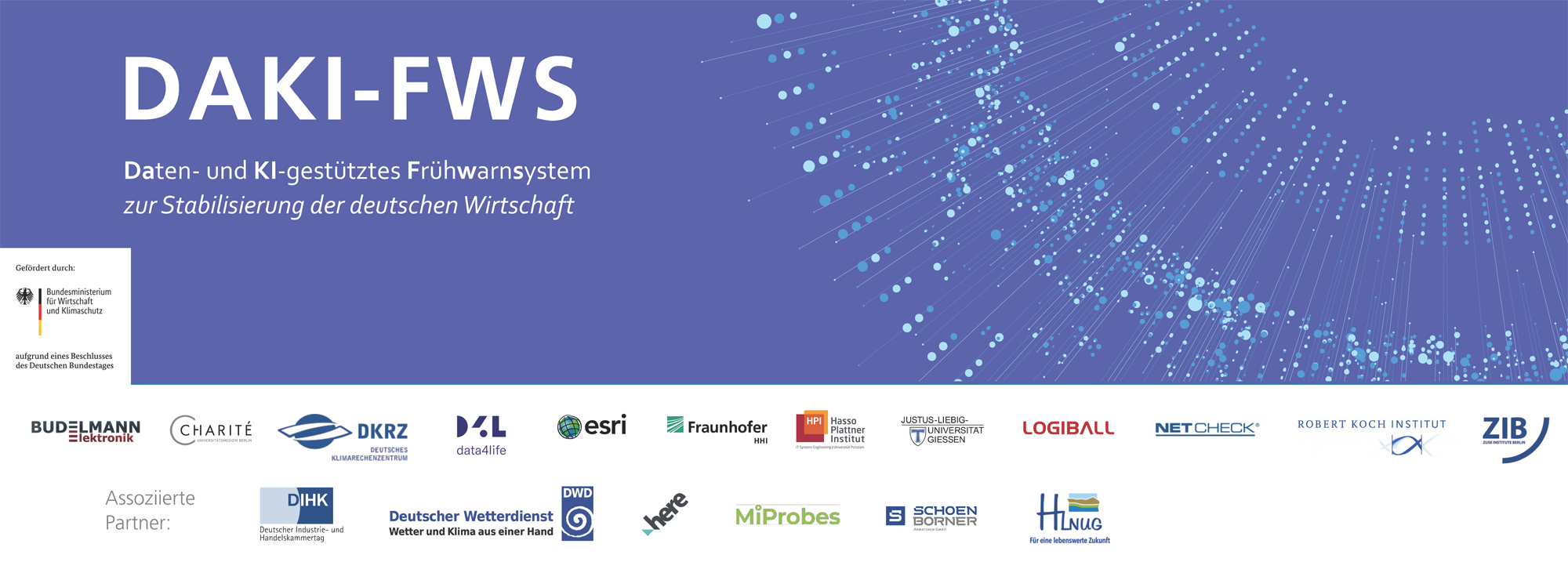DAKI-FWS
Data- and AI- supported early warning system to stabilise the German economy | duration: 01/12/2021 – 30/11/2024 |
|
|---|---|
 |
The aim of the overall project DAKI-FWS is to develop new models and methods based on digital technologies by using different data sources and artificial intelligence to strengthen the resilience of the economy. The development of the early warning system will integrate specific data sources and be modularly structured so that as many different companies from different sectors of the German economy as possible can use the system to be better positioned in future crisis situations. The development of an advanced early warning system to assess the economic consequences for companies in the German economy additionally provides the incentive to drive the digital transformation within the economy by the companies as economic participants. |
|
|
The aim of the sub-project led by Dr Elena Xoplaki is to establish an innovative climate change adaptation measure in Germany through the development of an innovative early warning system (EWS) with a seasonal time horizon to protect lives and jobs, land and infrastructure from extreme climate events. The weather and climate modules of the AI-supported system (DAKI-FWS) use the international state-of-the-art seasonal forecasts for Germany and apply innovative AI approaches to correct seasonal simulations (bias-corrected) and bring them to a very high spatial resolution (local to regional scale). With regard to the approach, weather and climate extremes, for example heat waves, storms or droughts, but also the simultaneous occurrence of extremes are first objectively identified from the large pool of meteorological and climatological reference data sets, seasonal forecasts and event lists. This allows optimal recognition of features and patterns and enables their dependencies to be determined and taken into account in spatio-temporal, high resolution. These activities are completed by the further development and AI extension of the European Flood Awareness System model, LISFLOOD. The model, developed by the Joint Research Centre (JRC) with European and also global application, will be adapted to the German federal territory in a high spatial resolution and fully calibrated. The AI-enhanced model will be combined together with the high-end output of the seasonal forecast and provide a high-resolution, accurate flood risk for the regions concerned with AI applications. |
|
Center for International Development and Environmental Research (ZEU) Justus-Liebig-University, Giessen (Germany) Department of Geography
|
|
 |
|
